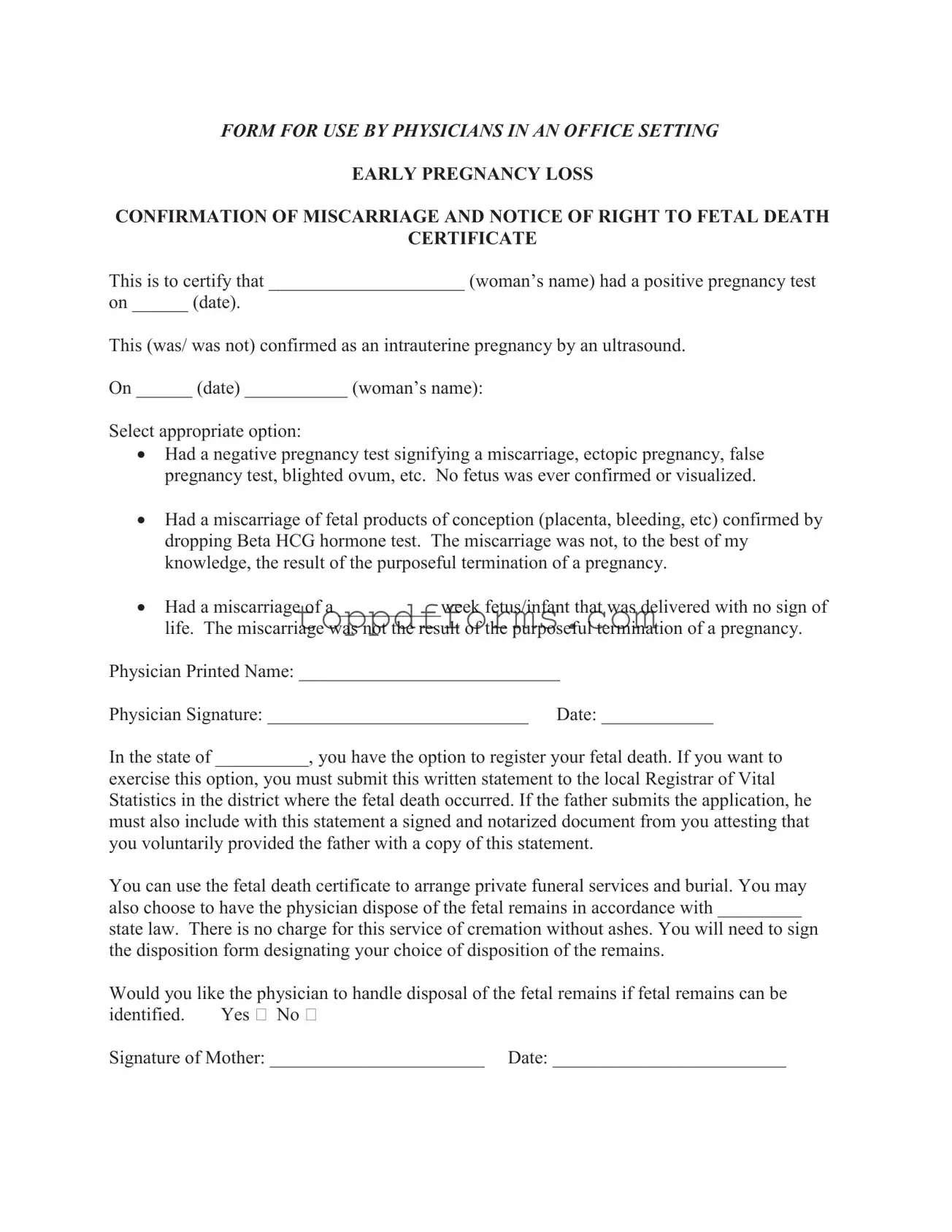What is the Miscarriage Discharge Paper form?
The Miscarriage Discharge Paper form is a document used by physicians to confirm a miscarriage. It includes details about the pregnancy, the results of any tests, and options regarding the disposition of fetal remains. This form is typically completed in an office setting following an early pregnancy loss.
What information is included in the form?
The form contains the woman's name, the date of the positive pregnancy test, confirmation of the pregnancy via ultrasound, and details about the miscarriage. It also includes options for registering a fetal death and information about the disposal of fetal remains.
Who fills out the Miscarriage Discharge Paper form?
A licensed physician is responsible for completing the form. The physician must provide accurate information regarding the pregnancy and the miscarriage, ensuring that all necessary details are included for the patient's records.
What options do I have regarding the fetal remains?
You have several options concerning the fetal remains. You can choose to have the physician handle the disposal according to state law, or you may arrange for private funeral services and burial. The form allows you to indicate your preference for the disposition of the remains.
Is there a fee for the disposal of fetal remains?
There is typically no charge for cremation without ashes if you choose to have the physician dispose of the fetal remains. However, you should confirm this with your healthcare provider, as policies may vary by location.
Can I register a fetal death in my state?
Yes, in many states, you have the option to register a fetal death. To do so, you must submit the Miscarriage Discharge Paper form to the local Registrar of Vital Statistics where the fetal death occurred. This registration can provide a formal acknowledgment of the loss.
What if the father wants to submit the application for fetal death registration?
If the father wishes to submit the application, he must include a signed and notarized document from you. This document should attest that you voluntarily provided him with a copy of the Miscarriage Discharge Paper form.
What does it mean to have a positive pregnancy test?
A positive pregnancy test indicates that the hormone hCG is present in your body, suggesting that you are pregnant. However, this does not always confirm a viable pregnancy, as further testing may be necessary to determine the status of the pregnancy.
What should I do if I have questions about the form?
If you have questions about the Miscarriage Discharge Paper form or the process surrounding it, it is advisable to speak directly with your physician. They can provide guidance and clarify any concerns you may have regarding the form and your options.
How does the form affect my medical records?
The Miscarriage Discharge Paper form becomes part of your medical records. It documents the details of the miscarriage and any decisions made regarding the fetal remains. This record may be important for future medical care and for any legal purposes related to the pregnancy loss.
